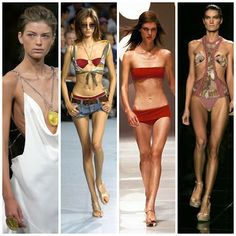Turning the tide on media-driven body obsession – Imi Peterson
The digital age is thoroughly upon us: everybody has a smartphone, computer, tablet or something similar which enables us to be connected to each other at all times. Social media is arguably one of the biggest contributors to the issue of image-perception and self-presentation; specifically, social media depression caused by following other people’s lives and comparing it to your own.
Essena O’Neill was one Instagram model who spoke out about this issue, re-captioning her photos to highlight the issue of living through social media to her 500,000+ followers. O’Neill realised the only way she was happy at the time was when she had validation that she looked good from her followers and this led her to comparing her body to others, at one point even searching the size of other models waist and thigh sizes and comparing them to her own measurements. O’Neill is now leading a movement to prevent others from being defined by numbers and the validation of others.

With this issue becoming more prominent in our lives, many are boycotting retailers and industries which promote unhealthy body images, such as the backfire Gucci’s most recent campaign received due to the thinness of its models. The Advertising Standards Authority, calling the images ‘irresponsible’, was replied to by Gucci saying ‘thinness is subjective’ and, as there are no bones on show, the models are ‘toned and slim.’ This response has met with anger on social media, one Twitter user saying ‘If I cover someone with anorexia in a blanket, does that also make them toned and slim?’
One of the most influential people in media currently is Zendaya, one of the many who are beginning to promote healthy body images and celebrate individual worth. At 19 years old, she is one of the youngest people who is taking a stance against unreal expectations, posting un-retouched photos (most recently from her Modeliste shoot) where she took to social media to say:
‘Had a new shoot come out today and was shocked when I found my 19 year old hips and torso quite manipulated. These are the things that make women self-conscious; that create the unrealistic ideals of beauty that we have. Anyone who knows who I am knows I stand for honest and pure self love. So I took it upon myself to release the real pic and I love it Thank you @modelistemagazine for pulling down the images and fixing this retouch issue.’
The teenager is also promoting awareness of ‘whitewashing,’ where black people are edited in the media to make their skin appear whiter, thereby implying they must have lighter skin to be ‘beautiful’. She and Willow Smith addressed this issue after the release of their W Magazine cover where their skin tone has obviously been retouched. This is not only affecting women; YouTuber KSI has also been part of this as his recent Forbes photo was almost unrecognisable.
As awareness of these matters grows, many companies are seeing falls in sales and popularity. Barbie is one which has greatly suffered, and has directly addressed this by creating a line of Barbie dolls with different body types and arrays of skin tones. The new dolls are now in curvy, tall and petite, with seven added skin tones, eighteen eye colours and eighteen hairstyles along with a wider range of ethnicities. This movement is trying to start children’s understanding of differences from a young age so that they learn there is no expectation for everyone to look the same way, and to prevent them from forming unrealistic expectations about how they should look. However, there is still some criticism that Barbie is not representing everybody. For example, the media is only just beginning to represent trans people and there are, as of yet, no Trans Barbies; but this new line of Barbies is definitely a step in the right direction.
However, it would be a mistake to think that things are not changing at all: France has banned models with a BMI of 18 or under in fashion shoots and on runways. In fact models must carry a certificate proving their health and anyone found ‘encouraging eating restrictions for a prolonged period of time, resulting in risk of mortality or damage to health’ may face up to a year in prison and fines of up to €100,000. A similar ban has been introduced in Israel, and Italy and Spain have introduced ‘voluntary codes of conduct,’ with the aims of discouraging anorexia and eating disorders. The new Aerie campaign has boosted sales by 20% with its body positive messages and its slogan, ‘How do you get a perfect bikini body? Put a bikini on your body. #AerieREAL’. Sports Illustrated also had its first plus sized model, Ashley Graham on the cover, which no doubt many of you have seen, and Laverne Cox is representing the Trans community in a new light. So it is down to people being honest in the media and not portraying false images of or promoting unhealthy expectations. People need to be more careful about the influence they have on others and think about the consequences that even one seemingly harmless photo could have.















1 comment